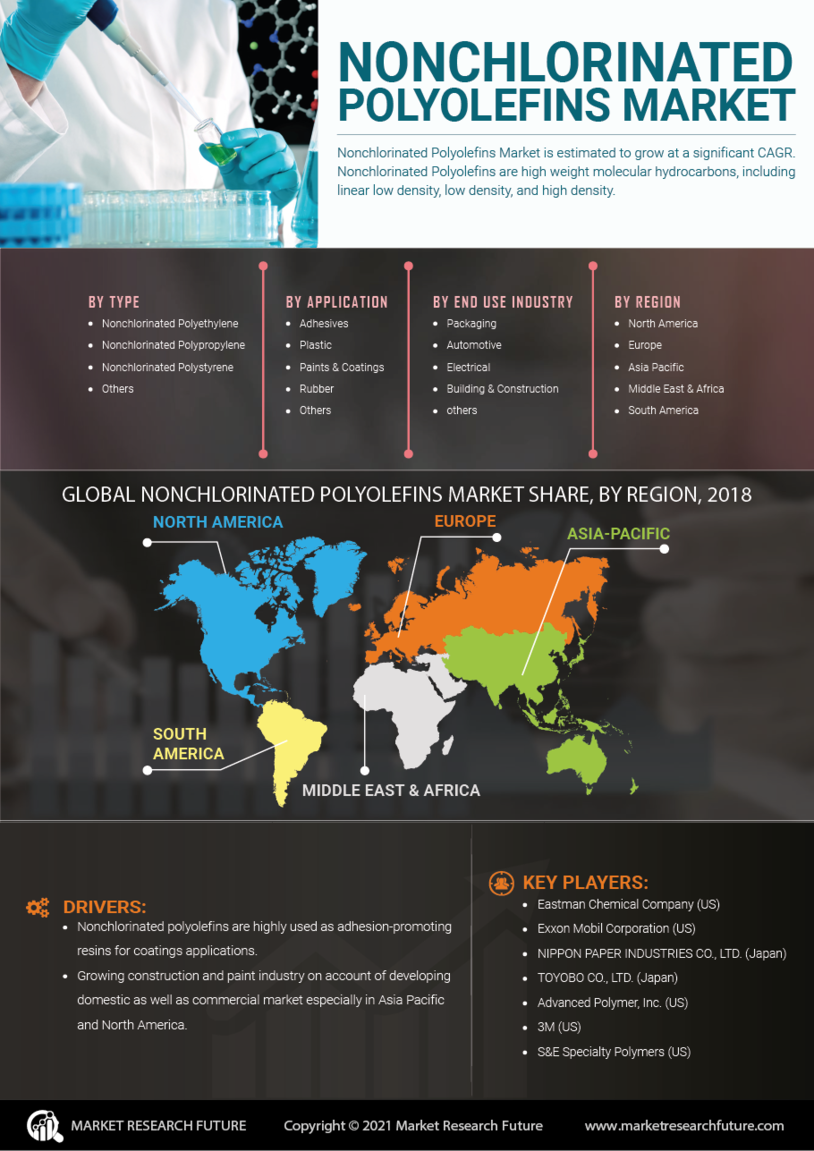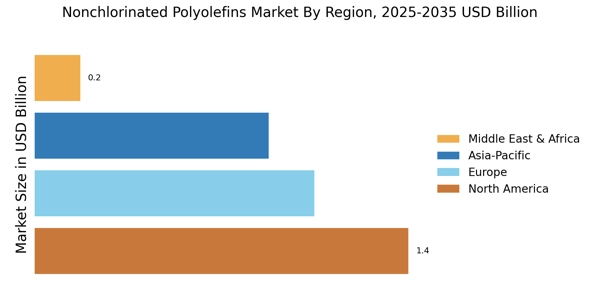Regulatory Compliance
The Nonchlorinated Polyolefins Market is significantly influenced by stringent regulatory frameworks aimed at reducing hazardous substances in materials. Governments worldwide are implementing regulations that restrict the use of chlorinated compounds due to their environmental and health impacts. This regulatory landscape is propelling manufacturers to transition towards nonchlorinated alternatives, thereby boosting the demand for nonchlorinated polyolefins. In 2025, it is anticipated that compliance with these regulations will drive a notable increase in market penetration, as companies seek to align their product offerings with legal requirements and consumer expectations for safer materials.
Technological Innovations
Technological advancements play a pivotal role in shaping the Nonchlorinated Polyolefins Market. Innovations in polymer processing techniques and formulations are enhancing the performance characteristics of nonchlorinated polyolefins. For instance, the development of advanced compounding methods has improved the material's mechanical properties and thermal stability, making it suitable for a wider range of applications. As of 2025, the market is expected to expand as manufacturers leverage these technologies to create high-performance products. This trend indicates a potential increase in market share for nonchlorinated polyolefins, particularly in sectors such as automotive and packaging, where material performance is critical.
Sustainability Initiatives
The increasing emphasis on sustainability within the Nonchlorinated Polyolefins Market is driving demand for eco-friendly materials. As industries seek to reduce their environmental footprint, nonchlorinated polyolefins, known for their lower toxicity and recyclability, are becoming preferred choices. This shift aligns with regulatory pressures and consumer preferences for sustainable products. In 2025, the market is projected to witness a growth rate of approximately 5% as companies adopt greener alternatives. The focus on sustainability not only enhances brand reputation but also opens new avenues for innovation in product development, thereby reinforcing the position of nonchlorinated polyolefins in various applications.
Diverse Application Spectrum
The versatility of nonchlorinated polyolefins is a key driver in the Nonchlorinated Polyolefins Market. These materials are utilized across various sectors, including automotive, packaging, and construction, due to their favorable properties such as chemical resistance and durability. The expanding application spectrum is expected to contribute to a compound annual growth rate of around 4% in the market by 2025. As industries continue to explore innovative uses for nonchlorinated polyolefins, the demand is likely to surge, further solidifying their role in modern manufacturing processes.
Consumer Awareness and Demand
Growing consumer awareness regarding the health and environmental impacts of materials is shaping the Nonchlorinated Polyolefins Market. As consumers become more informed, there is a rising demand for products that are free from harmful chemicals, including chlorinated compounds. This trend is prompting manufacturers to prioritize the development of nonchlorinated polyolefins, which are perceived as safer alternatives. By 2025, it is projected that this heightened consumer demand will lead to an increase in market share for nonchlorinated polyolefins, as companies strive to meet the expectations of environmentally conscious consumers.


















Leave a Comment